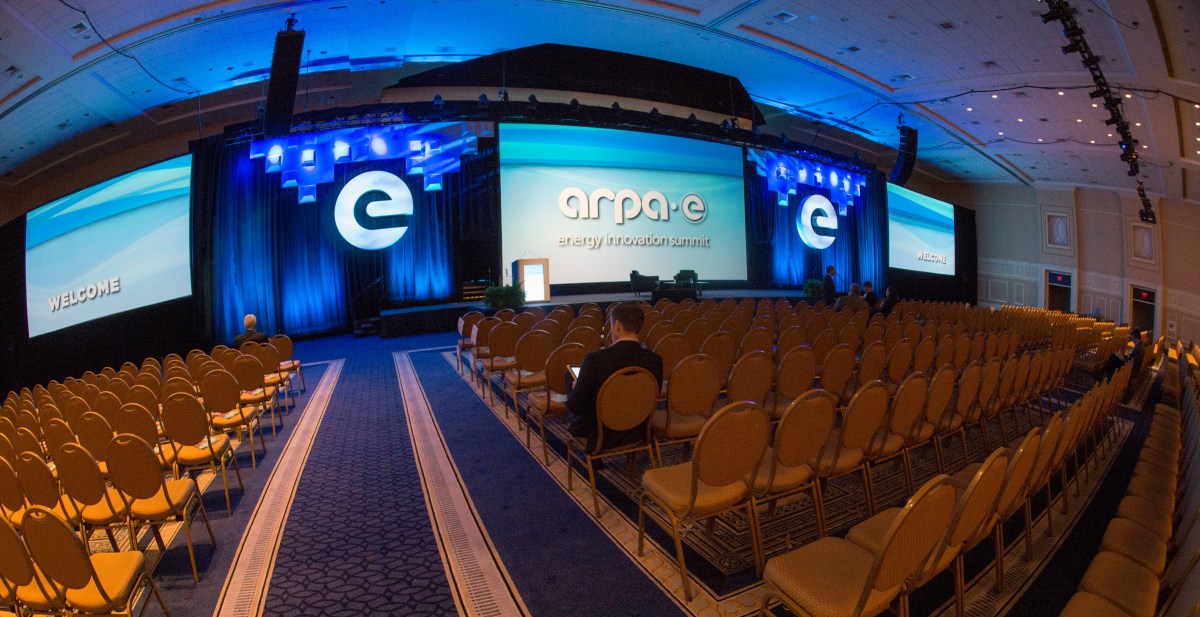5 things to know about ARPA-E

Many people admire the Defense Advanced Research Projects Agency, better known as DARPA — the military’s prolific research arm, which is credited with innovations such as GPS, stealth aircraft technology, unmanned aerial vehicles and ARPANET, the prototype communications array that paved the way for the internet revolution.
But the Advanced Research Projects Agency-Energy — or, ARPA-E — the Energy Department’s answer to the Pentagon’s tech research powerhouse, has yet to attract the same spotlight as its military-oriented cousin.
Nevertheless, it’s been busy since it was first funded in 2009 under the Obama administration’s America Recovery and Reinvestment Act. (It was first authorized in the America COMPETES Act of 2007). The multimillion-dollar agency’s work touches on several fundamental pieces of the nation’s tech infrastructure, including the electrical grid, energy storage and manufacturing.
Here are five quick facts about what ARPA-E has been up to lately:
It’s still alive
Rumors of the agency’s demise have been swirling since the Trump administration proposed stripping its funding for fiscal 2018.
The budget blueprint defends the decision to eliminate ARPA-E by declaring that it’s usurping a mantle best taken up by private companies, saying “the private sector is better positioned to finance disruptive energy research and development and to commercialize innovative technologies.”
Despite the threat of the ax for next year, ARPA-E is getting a boost for the rest of fiscal 2017. It picked up an extra $15 million above fiscal 2016 spending levels under the last-minute congressional budget compromise to keep the government running through Sept. 30. Fiscal 2017 spending will be $306 million total.
It’s not stealing the private-sector spotlight — or trying to
One reason why Congress might want to keep ARPA-E around: The argument in favor of closing it just didn’t add up, says its former director.
“ARPA-E does not compete at a stage at which the private sector does R&D,” Ellen Williams, who served as the agency’s director from 2014 through her dismissal under the new administration, told Forbes as the controversy unfolded. “ARPA-E is looking far-too-early stage at technologies that are very high risk and allowing those technologies to compete kind of on an even playing field.”
In other words, ARPA-E funds high-potential projects that have yet to prove their efficacy to an extent that would attract serious private sector investors.
According to Williams, the agency nurtures such concepts until they’re ready for commercialization — or until they fail — and then “kicks them out the door.”
ARPA-E graduates have raised a ton of private funding
ARPA-E has invested in 580 projects since 2009, totaling around $1.5 billion. As of February, 74 of those projects have taken major steps toward commercialization, raising a collective $1.8 billion in private-sector funding.
It’s has no plans to develop a lightsaber …
Sorry, Luke Skywalker wannabes. Although ARPA-E has funded a slew of highly experimental projects, including nine that aim to further progress towards sustainable nuclear fusion reactors as part of project ALPHA (Accelerating Low-Cost Plasma Heating and Assembly), a laser sword isn’t on the roadmap.
… But it has contributed a great deal to the world of batteries
There are regular batteries — small cubes or cylinders that go into flashlights and TV remotes — and there are ARPA-E batteries.
The latter type is likely to challenge most layman’s very definition of the word. ARPA-E battery projects run the gamut from flow devices that use common organic molecules to large wheels that store heat in molten glass.
Such innovations are a big deal; the ability to cheaply and easily store large amounts of energy is considered a “Holy Grail” for the expansion of renewable energy use.
Examples of ARPA-E projects that led to commercial successes: The Marine Corps is using a Primus Power concept that enhances flow batteries with electrodes, and the Army Corps of Engineers is using a vanadium-based flow battery from Energy Storage Systems that reduces production cost by leveraging iron chemistry.






